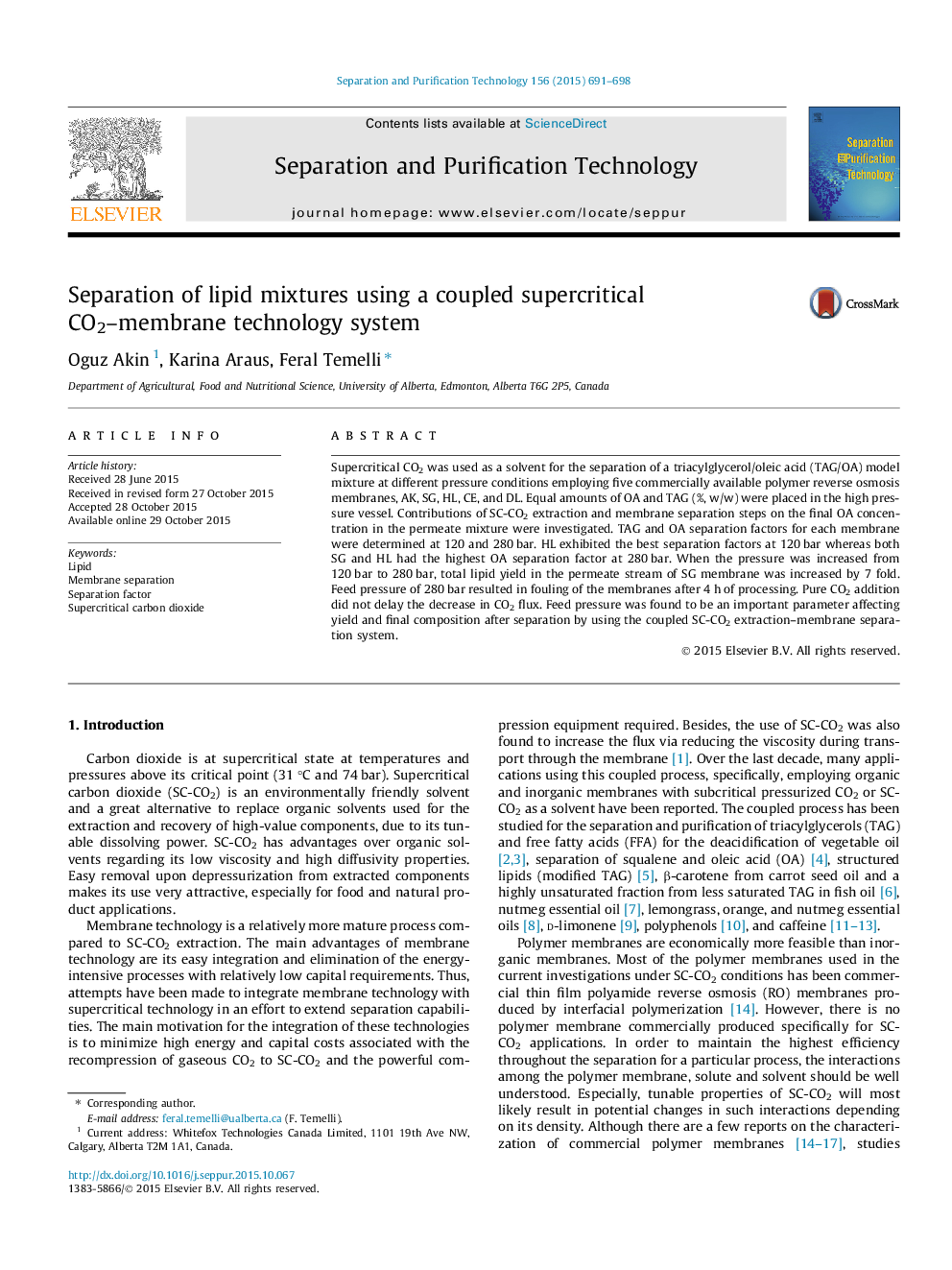| Article ID | Journal | Published Year | Pages | File Type |
|---|---|---|---|---|
| 10389733 | Separation and Purification Technology | 2015 | 8 Pages |
Abstract
Supercritical CO2 was used as a solvent for the separation of a triacylglycerol/oleic acid (TAG/OA) model mixture at different pressure conditions employing five commercially available polymer reverse osmosis membranes, AK, SG, HL, CE, and DL. Equal amounts of OA and TAG (%, w/w) were placed in the high pressure vessel. Contributions of SC-CO2 extraction and membrane separation steps on the final OA concentration in the permeate mixture were investigated. TAG and OA separation factors for each membrane were determined at 120 and 280Â bar. HL exhibited the best separation factors at 120Â bar whereas both SG and HL had the highest OA separation factor at 280Â bar. When the pressure was increased from 120Â bar to 280Â bar, total lipid yield in the permeate stream of SG membrane was increased by 7 fold. Feed pressure of 280Â bar resulted in fouling of the membranes after 4Â h of processing. Pure CO2 addition did not delay the decrease in CO2 flux. Feed pressure was found to be an important parameter affecting yield and final composition after separation by using the coupled SC-CO2 extraction-membrane separation system.
Related Topics
Physical Sciences and Engineering
Chemical Engineering
Filtration and Separation
Authors
Oguz Akin, Karina Araus, Feral Temelli,
